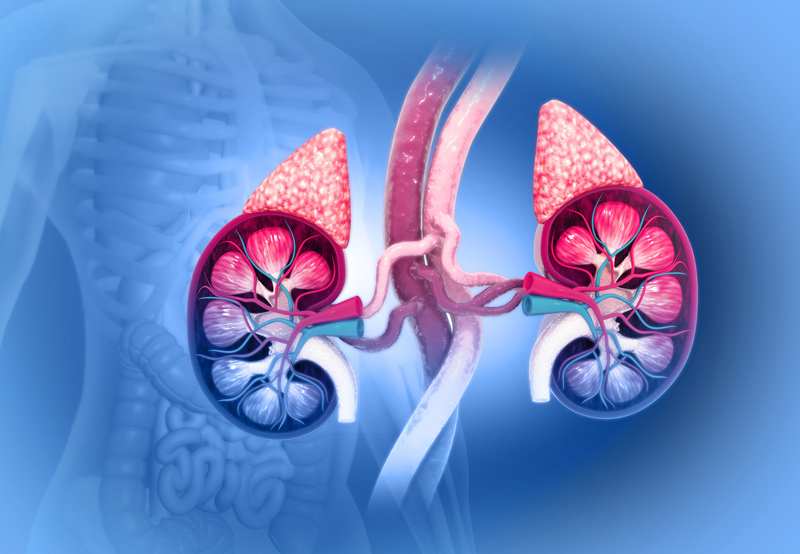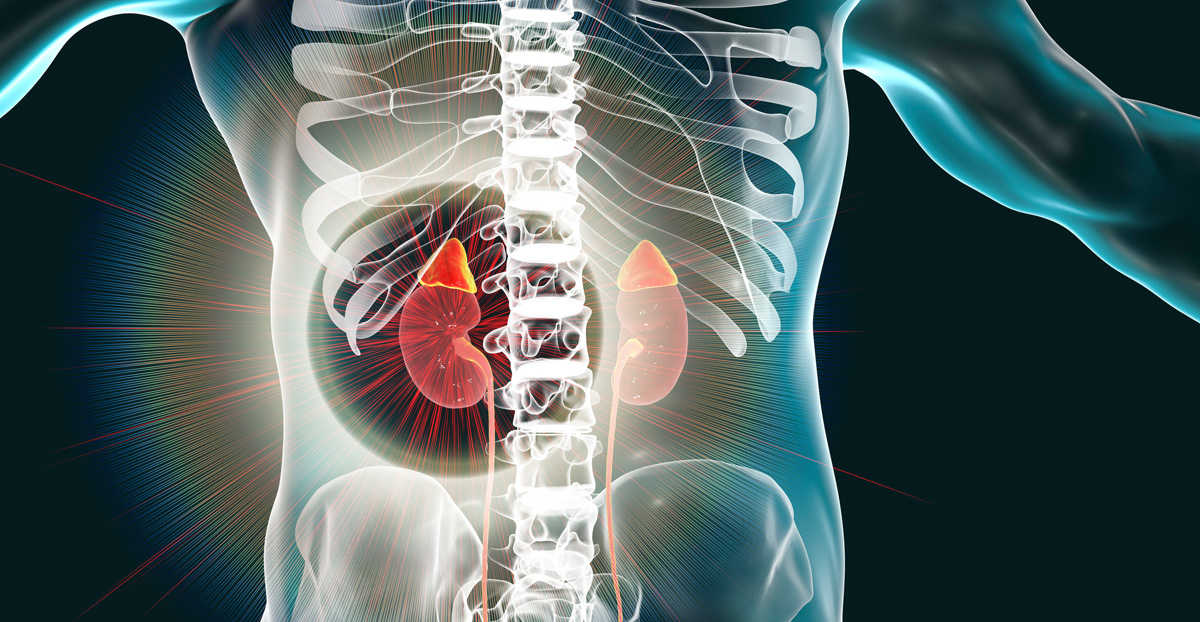

The adrenal glands are located just above each kidney and produce adrenaline, cortisol, and sex hormones. Adrenal surgery, or adrenalectomy, is surgery done to remove one or both of the adrenal glands.
Symptoms Caused by the Adrenal Glands
If the adrenal glands are producing too many hormones, individuals may experience:
- Excessive sweating
- Anxiety
- Headaches
- Fatigue
- Muscle weakness
- High blood pressure
- Frequent urination
- Heart palpitations
- Obesity
Too much cortisol can lead to Cushing’s syndrome, which can become life-threatening if left untreated. Adrenals that produce too much of a blood pressure hormone called aldosterone can lead to salt wasting and high blood pressure that resists treatment with medication. This condition is called primary hyperaldosteronism.
Overproduction of a group of blood pressure hormones called catecholamines and metanephrines is called pheochromocytoma. Patients with this condition can experience a life-threatening problem with high blood pressure.

How to Prepare For Adrenalectomy
Before surgery, patients may need to:
- Restrict food and water the day before surgery
- Stop taking medications like non-steroidal anti-inflammatory drugs (NSAIDs), which can inhibit blood clotting and overall recovery
- Take high blood pressure medication
What to Expect During Adrenal Surgery
An open adrenalectomy is done through a single large incision in the abdomen to remove a large or cancerous adrenal gland.
During a laparoscopic adrenalectomy, the surgeon makes a few small incisions and uses a laparoscope to see inside the patient’s body. Robotic adrenalectomy also requires a few small incisions but uses wristed, rather than rigid instruments. With either approach, the incisions can be made on the back or on the side. The back approach is often preferred in patients with a history of prior upper abdominal incisions and two-sided tumors. However, only tumors smaller than six centimeters can be removed from the back.
During adrenalectomy, the surgeon may remove only one tumor, one gland, or both. A unilateral adrenalectomy removes one gland, whereas a bilateral adrenalectomy removes both glands.
The Recovery Process
The patient will feel sore for a week or two after surgery, but the symptoms of kidney cancer and hormone overproduction should subside immediately. The recovery process is typically two to three weeks. During this time, patients will need to:
- Rest and allow the wound to heal
- Eat a healthy diet
- Talk to their doctor about which medications to take to relieve pain
- Properly wash and clean the wound
- Engage in light activities, like walking and working only if they feel comfortable
- Hold a pillow over the incisions when coughing or taking a deep breath
- Contact their doctor if they’re not having regular bowel movements without straining
Potential Risks and Complications of Adrenal Surgery
The risks of the procedure depend on whether the patient was operated on via laparoscopic adrenalectomy or open adrenalectomy. A laparoscopic adrenalectomy causes less pain, leaves smaller scars, carries fewer risks, and requires a shorter hospital stay. However, all patients will be monitored for hernia, infection, bleeding, blood clots, damage to nearby organs, problems with wound healing, and reactions to anesthesia.
